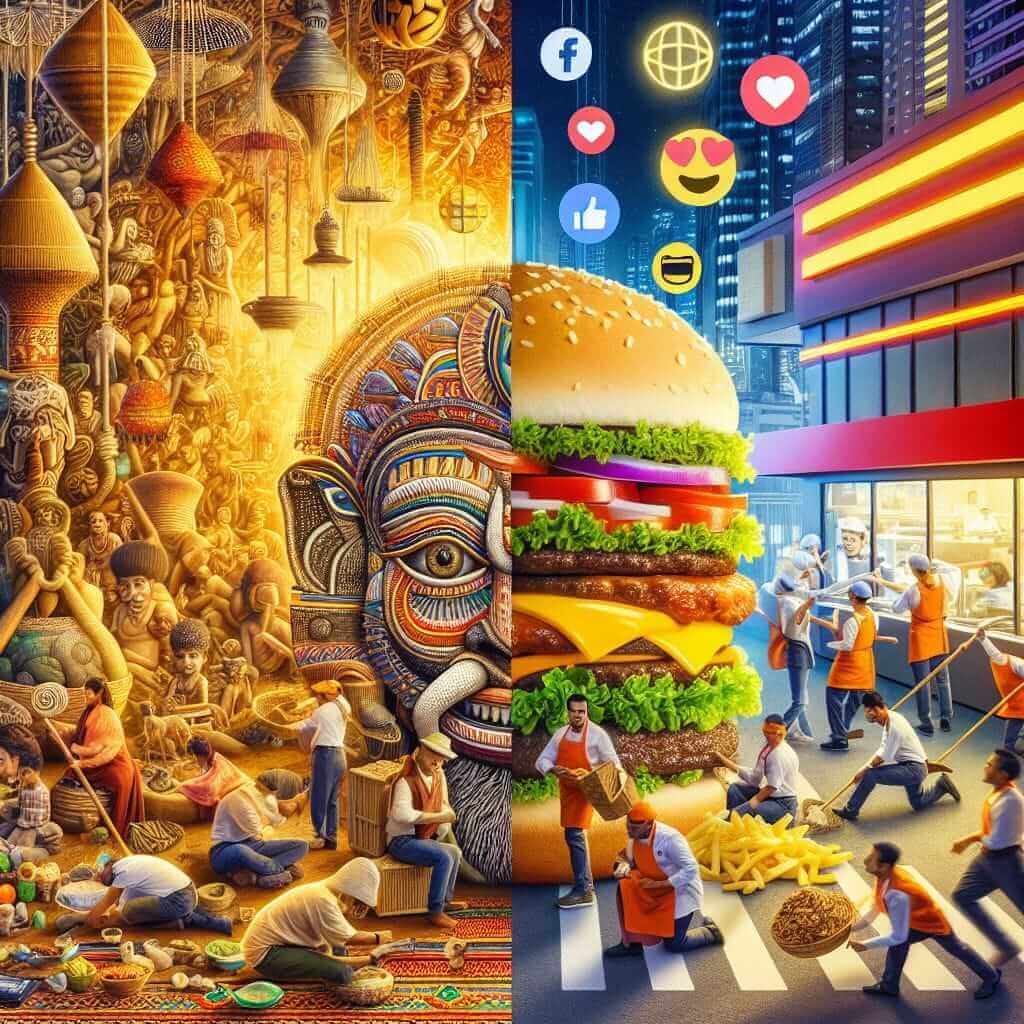The intersection of globalization and cultural homogenization is a hot-button topic frequently appearing in IELTS Writing Task 2. This essay will delve into this complex issue, providing a sample answer, vocabulary analysis, and key considerations for crafting a band-8 worthy response.
Nội dung bài viết
Here are some potential IELTS essay questions on this topic:
- To what extent has globalization led to cultural homogenization? Discuss this issue, providing examples to support your arguments.
- Some people argue that globalization leads to the destruction of cultural diversity. To what extent do you agree or disagree?
- Globalization has both positive and negative impacts on culture. Discuss both sides and give your own opinion.
Sample Essay Question
To what extent has globalization led to cultural homogenization? Discuss this issue, providing examples to support your arguments.
Essay Analysis
This question requires you to analyze the degree to which globalization has resulted in cultural homogenization. You must present a balanced view, acknowledging both the homogenizing influences and the forces that resist this trend.
Sample Essay
Globalization, the increasing interconnectedness of the world, has undeniably impacted cultural landscapes across the globe. While some argue that this phenomenon inevitably leads to cultural homogenization, a more nuanced view recognizes the complex interplay between global forces and local identities.
On the one hand, globalization has facilitated the spread of Western cultural products and values, particularly through the dominance of American media, fashion, and technology. This has resulted in the adoption of similar consumption patterns, lifestyles, and even values in many parts of the world, leading to a degree of cultural convergence. For instance, fast food chains like McDonald’s and KFC have proliferated globally, often at the expense of local culinary traditions. Similarly, the ubiquitous presence of Hollywood movies and Western music has influenced artistic expressions worldwide, potentially blurring cultural boundaries.
On the other hand, globalization has also fostered cross-cultural exchange and understanding. The internet and social media, for example, have facilitated communication and interaction across borders, exposing people to diverse cultures and fostering a sense of global citizenship. Moreover, globalization has empowered marginalized communities to revitalize their cultural heritage and share it with a wider audience. The resurgence of indigenous art forms and languages, supported by global platforms, stands testament to this phenomenon.
 Globalization and Cultural Homogenization
Globalization and Cultural Homogenization
In conclusion, while globalization has contributed to a degree of cultural homogenization, particularly through the spread of Western influences, it is inaccurate to suggest a complete erosion of cultural diversity. Globalization is a complex force that can both homogenize and diversify cultures, and the extent of its impact varies depending on local contexts and the resilience of cultural identities. Ultimately, the future of cultural diversity lies in striking a balance between embracing the benefits of globalization and safeguarding the uniqueness of individual cultures.
Word Count: 288 words
Writing Tips
- Structure: Use a clear structure to present your arguments. The sample essay follows a balanced approach, discussing both sides of the issue.
- Vocabulary: Utilize topic-specific vocabulary to demonstrate your understanding of the topic (see vocabulary list below).
- Examples: Support your arguments with relevant and specific examples. The sample essay provides examples related to fast food, media, and the resurgence of indigenous cultures.
- Grammar: Use a variety of grammatical structures to enhance your writing. The sample essay includes complex sentences, passive voice, and conditional clauses.
Key Vocabulary
- Homogenization (noun /həˌmɑː.dʒə.nəˈzeɪ.ʃən/): The process of making things the same or uniform.
- Globalization (noun/ˌɡloʊ.bə.ləˈzeɪ.ʃən/): The process of interaction and integration among people, companies, and governments worldwide.
- Cultural Convergence (noun /ˈkʌl.tʃər.əl kənˈvɝː.dʒəns/): The tendency of different cultures to become more alike as they interact.
- Westernization (noun /ˌwes.tər.naɪˈzeɪ.ʃən/): The adoption of Western culture, values, and customs.
- Cultural Imperialism (noun /ˈkʌl.tʃər.əl ɪmˈpɪr.i.ə.lɪ.zəm/): The imposition of one culture’s beliefs and practices on another culture through media, economic, or political dominance.
- Cultural Diversity (noun /ˈkʌl.tʃər.əl dɪˈvɝː.sə.t̬i/): The existence of a variety of cultural groups within a society.
- Cross-cultural exchange (noun /ˌkrɔːsˈkʌl.tʃər.əl ɪksˈtʃeɪndʒ/): The sharing of ideas, customs, and values between different cultures.
- Glocalization (noun /ˌɡloʊ.kə.ləˈzeɪ.ʃən/): The adaptation of global products or services to local markets and cultures.
- Ubiquitous (adjective /juːˈbɪk.wɪ.təs/): Being or seeming to be everywhere at the same time.
- Resurgence (noun /rɪˈsɝː.dʒəns/): An increase or revival after a period of little activity, popularity, or occurrence.
Conclusion
Tackling the complex issue of globalization and cultural homogenization effectively in your IELTS essay requires a multifaceted approach. By utilizing a clear structure, appropriate vocabulary, relevant examples, and a balanced perspective, you can craft a compelling argument that showcases your understanding of this significant global trend. Remember to practice your writing regularly and review sample essays to enhance your skills and confidence.


